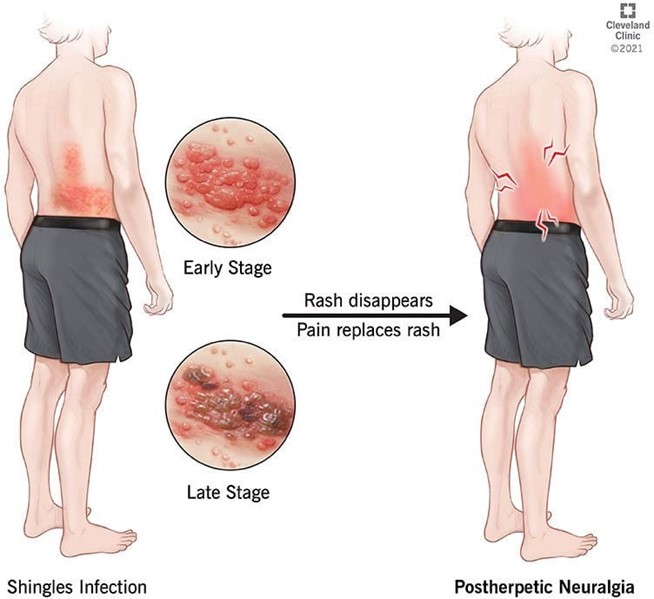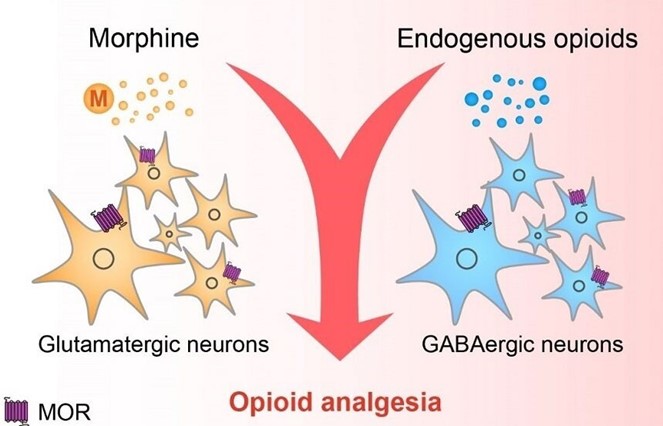The practical nurse (PN) is making a home visit to an older male adult who was recently diagnosed with Herpes zoster (shingles). The client reports the onset of severe burning pain along the right side of his trunk. What action should the PN take?
Administer a prescribed PRN dose of analgesic.
Obtain an oxygen tank for home administration.
Give the next prescribed dose of antiviral medication.
Notify the nursing supervisor of the uncontrolled pain.
The Correct Answer is A
This is the best action for the PN to take because it provides immediate relief for the client's pain, which can be severe and debilitating in Herpes zoster. The PN should also assess the client's pain level, location, and characteristics and document the response to the medication.

B. Obtaining an oxygen tank for home administration is not indicated for this client and does not address his pain issue. Herpes zoster does not affect the respiratory system and does not cause hypoxia or dyspnea.
C. Giving the next prescribed dose of antiviral medication is not a priority for this client and may not have an immediate effect on his pain. Antiviral medication can help reduce the duration and severity of Herpes zoster, but it does not provide analgesia.
D. Notifying the nursing supervisor of uncontrolled pain is not a priority for this client and may delay his pain relief. The PN should notify the nursing supervisor only if the prescribed analgesic is ineffective or causes adverse effects.
Nursing Test Bank
Naxlex Comprehensive Predictor Exams
Related Questions
Correct Answer is B
Explanation
This is the best action for the PN to use in assisting this client to deal with his pain because it provides a non-pharmacological method of pain relief that can enhance the effect of the opioid analgesic. Slow, rhythmic breathing can help the client relax, distract from the pain, and increase oxygenation and blood flow.

A. Dimming the lights in the room and closing the door may not be enough to help the client deal with his pain and may not address his psychological or emotional needs.
C. Turning the television on to the client's favorite show may not be effective in helping the client deal with his pain and may be distracting or irritating for him.
D. Obtaining a prescription for a higher dose of pain medication may not be necessary or appropriate for this client and may increase the risk of side effects or dependence. The PN should assess the client's pain level and response to the current dose before requesting a change in medication.
Correct Answer is ["A","B","D"]
Explanation
These are the correct supplies for the PN to gather because they are needed to remove the saline lock safely and prevent bleeding or infection. The PN should wear exam gloves to protect themselves and the client from contamination, apply a small gauze pad over the insertion site and secure it with paper tape after removing the saline lock.
C. A three mL syringe is not needed to remove a saline lock and may cause confusion or harm if used incorrectly.
E. Sterile gloves are not needed to remove a saline lock and may be wasteful or unnecessary.
Whether you are a student looking to ace your exams or a practicing nurse seeking to enhance your expertise , our nursing education contents will empower you with the confidence and competence to make a difference in the lives of patients and become a respected leader in the healthcare field.
Visit Naxlex, invest in your future and unlock endless possibilities with our unparalleled nursing education contents today
Report Wrong Answer on the Current Question
Do you disagree with the answer? If yes, what is your expected answer? Explain.
Kindly be descriptive with the issue you are facing.
